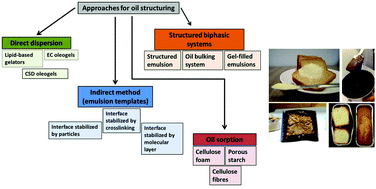Edible oil structuring: an overview and recent updates
Abstract
In recent years, research dealing with edible oil structuring has received considerable interest from scientific community working in the area of food formulation. Much of this interest is linked to the possibility of using structured oil in development of newer product formats with improved nutritional profile (trans fat-free, low in saturated fats and high in mono and/or poly unsaturated fatty acids). In addition to the obvious industrial need of finding the alternative formulation approach, the interesting properties of structured systems (particularly, oleogels) also makes them a fascinating subject for fundamental studies. In this paper, we attempt to give a comprehensive and concise overview of the field of oil structuring with special emphasis on the updates from recent years. Specifically, several categories of food-grade oleogelators and their potential food applications are summarized with typical examples along with a discussion on the general principles and unresolved challenges related to this emerging area.


 Please wait while we load your content...
Please wait while we load your content...